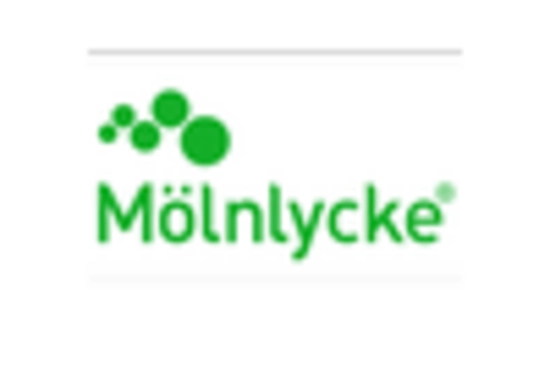Increasing Surgical Procedures
The Surgical Sutures Market is experiencing growth due to the rising number of surgical procedures performed worldwide. Factors such as an aging population, increasing prevalence of chronic diseases, and advancements in surgical techniques contribute to this trend. According to recent data, the number of surgical procedures is projected to increase by approximately 10% annually over the next five years. This surge in surgical interventions necessitates a corresponding demand for surgical sutures, as they are essential for wound closure and healing. As healthcare providers strive to improve patient outcomes, the reliance on high-quality sutures becomes paramount, thereby driving the Surgical Sutures Market forward.
Technological Advancements in Sutures
Technological innovations are significantly influencing the Surgical Sutures Market. The introduction of advanced materials, such as synthetic absorbable sutures and antimicrobial-coated sutures, enhances the performance and safety of surgical sutures. These innovations not only improve healing times but also reduce the risk of infections, which is a critical concern in surgical settings. Market data indicates that the segment of advanced sutures is expected to grow at a compound annual growth rate of 8% over the next few years. As healthcare providers increasingly adopt these advanced sutures, the Surgical Sutures Market is likely to witness substantial growth.
Expansion of Healthcare Infrastructure
The expansion of healthcare infrastructure in various regions is positively impacting the Surgical Sutures Market. As new hospitals and surgical centers are established, the demand for surgical sutures is expected to rise correspondingly. Investments in healthcare facilities, particularly in emerging markets, are facilitating access to surgical procedures and, consequently, increasing the need for sutures. Recent reports indicate that healthcare spending in these regions is anticipated to grow by 20% over the next decade. This expansion not only enhances surgical capabilities but also drives the growth of the Surgical Sutures Market, as more facilities require reliable and effective suturing solutions.
Growing Awareness of Surgical Site Infections
The increasing awareness of surgical site infections (SSIs) is a significant driver for the Surgical Sutures Market. Healthcare professionals are becoming more vigilant about infection control, leading to a heightened demand for sutures with antimicrobial properties. Studies indicate that SSIs can lead to extended hospital stays and increased healthcare costs, prompting hospitals to invest in high-quality sutures that mitigate these risks. The market for antimicrobial sutures is projected to grow by 15% over the next five years, reflecting the urgent need for effective solutions in the Surgical Sutures Market.
Rising Demand for Minimally Invasive Surgeries
The trend towards minimally invasive surgeries is reshaping the Surgical Sutures Market. These procedures, which offer reduced recovery times and lower risk of complications, often require specialized sutures that cater to their unique needs. As more surgeons adopt minimally invasive techniques, the demand for sutures that can effectively support these procedures is expected to rise. Market analysis suggests that the minimally invasive surgery segment is growing at a rate of 12% annually, which directly impacts the Surgical Sutures Market. This shift not only enhances patient satisfaction but also drives innovation in suture technology.

















Leave a Comment